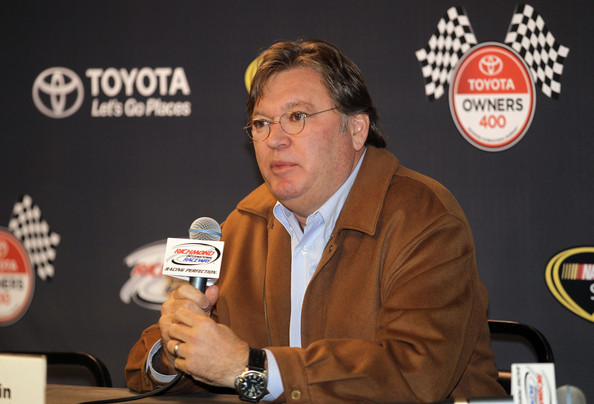
NASCAR Executive Vice President of Racing Operations, Steve O’Donnell and NASCAR Vice President of Competition and Racing Development Robin Pemberton announced updates to the penalty and appeal process this morning.
The first change is the name, NASCAR will now refer to the penalty process as the “deterrence system.”
“At the same time, we believe the Appeals process allows a fair opportunity for our NASCAR Members to be heard, and have penalty disputes resolved by an impartial, relevant group of people with the ability to handle the complexities inherent in any appeal. This system has been tailored specifically to fit the needs of our sport.”
Former president of Gulfstream Aerospace, Bryan Moss will be the Final Appeals Officer. Moss will hear matters on appeal from the lower three-member Appeals Panel, and serve as the last decision on penalty disputes for the sport.
NASCAR’s Deterrence System
- The system starts with warnings (W) issued for very minor infractions, then are grouped into six levels – P1 (least significant) to P6 (most significant).
- Lower P levels list penalty options from which NASCAR may select (fines or points) while higher P levels are an all-inclusive combination of multiple penalty elements (points and fine and suspension, etc.).
- At the highest three levels of the system, if a rules infraction is discovered in post-race inspection, the one or more additional penalty elements are added on top of the standard prescribed penalty.
- Repeat offenses by the same car are addressed via a “recurrence multiplier,” i.e. if a P4 penalty was received and a second P4 or higher infraction occurs in the same season, the subsequent penalty increases 50% above the normal standard.
- Suspensions are explained in greater detail.
- Behavioral infractions are still handled on case-by-case basis and are not built into the W, P1-P6 structure.
Penalties:
- P1 penalties may result from multiple warnings to the same team.
- P2 penalties may include but are not limited to violations such as hollow components, expiration of certain safety certification or improper installation of a safety feature, or minor bracket and fasteners violations.
- P3 penalty options may include but are not limited to violations such as unauthorized parts, measurement failures, parts that fail their intended use, or coil spring violation.
- P4 level infractions may include but are not limited to violations such as devices that circumvent NASCAR templates and measuring equipment, or unapproved added weight .
- P5 level may include but are not limited to violations such as combustion-enhancing additives in the oil, oil filter, air filter element or devices, systems, omissions, etc., that affect the normal airflow over the body.
- P6 level may include but are not limited to violations such as affecting the internal workings and performance of the engine, modifying the pre-certified chassis, traction control or affecting EFI or the ECU.
The track promoters will no longer be part of the appeals process. The panel will only be “industry experts.”
NASCAR warnings will now be “public” knowledge.
The team and NASCAR will be in the room at the same time, instead of previously where each would meet separately at the initial appeal.
The 2014 Rule Book will explain how and why NASCAR issues penalties as well as the factors considered when determining a penalty
The new Appeals process continues to provide two tiers for resolving disputes, some of the changes listed below:
- Clearly identifying the procedural rights of NASCAR Members
- Detailing responsibilities of parties throughout the process
- Allowing parties the option to submit summaries on issues before the Appeals Panel
- Allowing NASCAR Members named in the penalty to be present during the entire hearing
- Appeals Administrator is not allowed to be present during panel deliberations
- Creating a clear Expedited Appeals Procedure when necessary
- Changing the name of the Appeals Panel to The National Motorsports Appeals Panel
It’s a lot to digest but I am sure as the season goes on (and teams and drivers are penalized) we will see first hand how the new system works.
